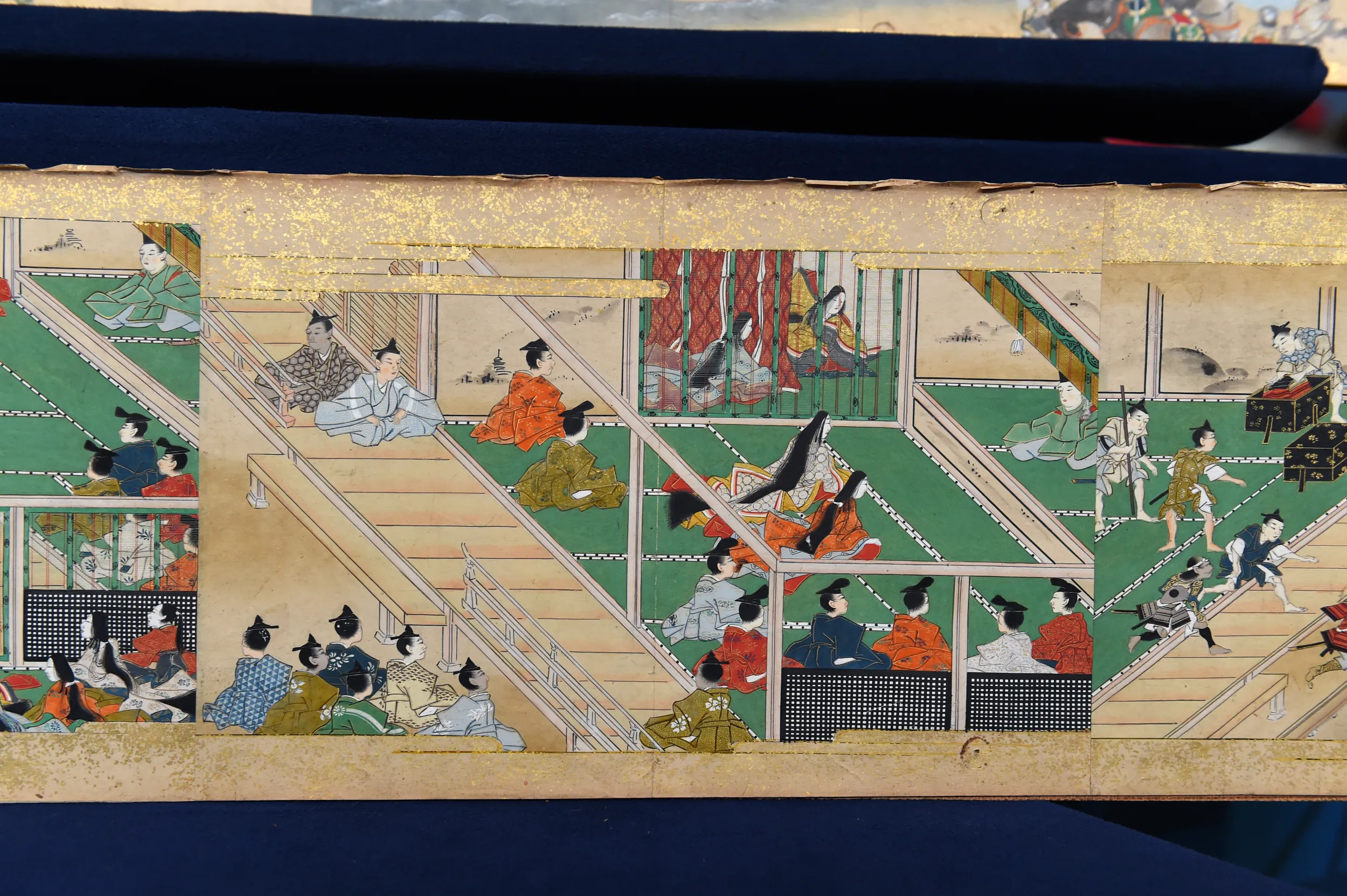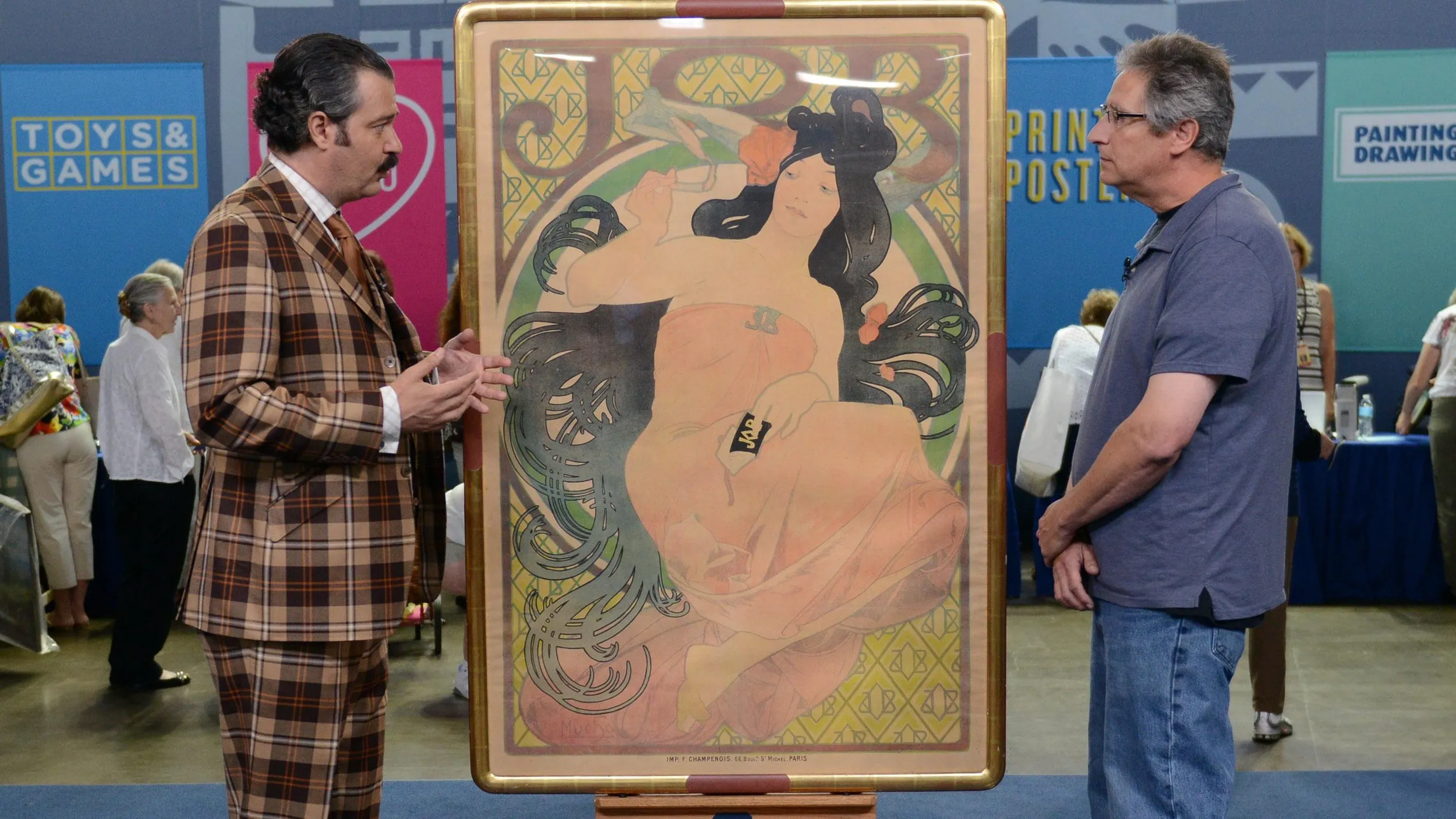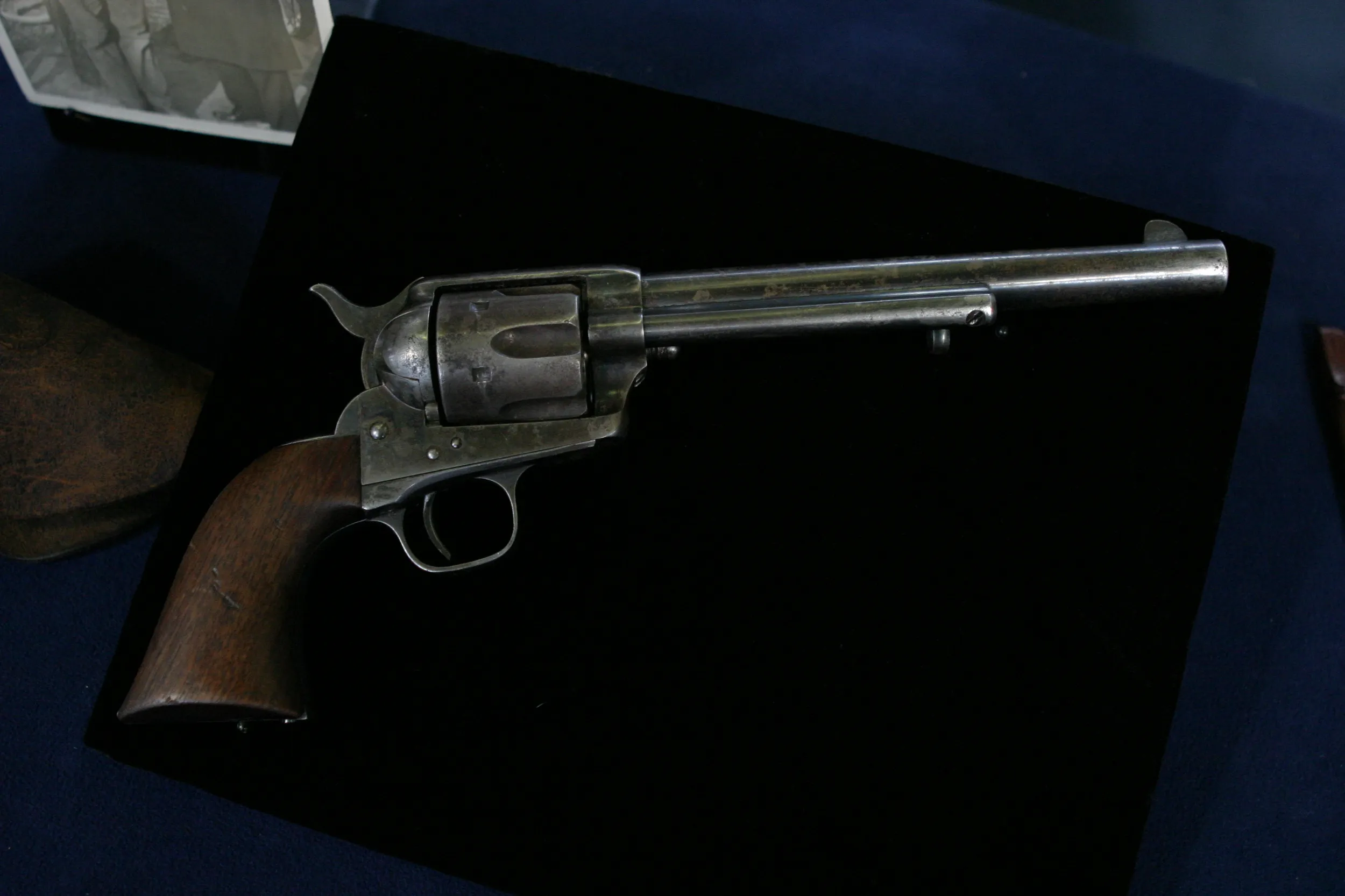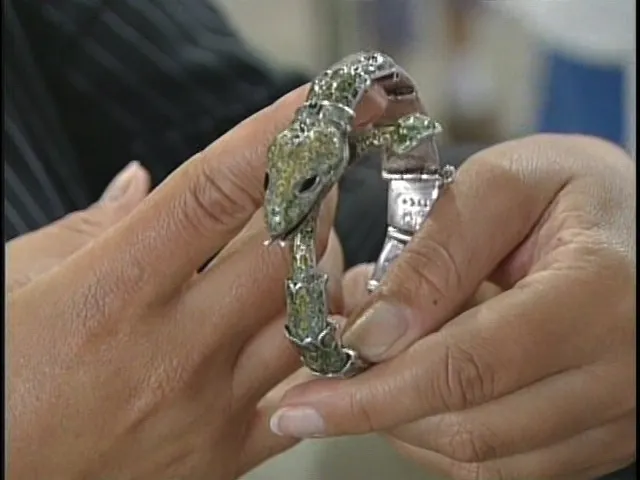GUEST: I was at an antique auction. They were stacked together. I pulled them each apart carefully. And I loved the brilliant colors. They were just vibrant, and I thought they told a story, but I couldn't figure out how they told a story. But I came back to looking at them really closely, and it looked like they were almost painted as opposed to printed. And so I said I had to have them.
APPRAISER: How long ago did you purchase this?
GUEST: Oh, probably maybe about five to ten years ago, maybe more toward the ten years. I paid $100 for all four of them.
APPRAISER: So you paid $100 for something that you didn't know anything about, just on a hunch. Well, you had a good hunch.
GUEST: Great, thank you.
APPRAISER: These are Japanese.
GUEST: Japanese, okay.
APPRAISER: They are 17th century. They are fragments of a hand scroll, which was a scroll that you would roll out and keep looking at the pictures as you unrolled it. These were meant to be read right to left.
GUEST: Okay.
APPRAISER: I say "fragments," because it appears, although you can see the end of this chapter going into the beginning of that chapter...
GUEST: Okay.
APPRAISER: ...if you try and put them all together, it doesn't all make sense.
GUEST: Okay.
APPRAISER: So we're missing about two sections, I would say. These depict military battles, or what we call gunki monogatari. That means military stories.
GUEST: Okay.
APPRAISER: Based on Kamakura battles and battle scenes and daily life. Kamakura period was from 1192 to 1333. The rise of feudalism in Japan, a lot of turbulence during that period. So you see that here in all of these fantastic warrior scenes. This is a 17th century representation of that time period, probably done by the Kano school, which was one school of painters in that area. This is depicted in mineral pigments and ink on paper with gold flecking in the clouds. And the clouds was a painting technique to tie all of the scenes together. In 2001, a hand scroll of this type was sold at auction. It was complete. It also had stories in calligraphy. It brought $50,000.
GUEST: (laughing): Okay.
APPRAISER: Unfortunately, yours is not complete.
GUEST: That's fine.
APPRAISER: And no calligraphy. However, at auction today, even incomplete, your $100 purchase would be estimated at between $10,000 and $20,000.
GUEST: Wow.
APPRAISER: If you had shown this to us in the 1980s, this would be worth more than $10,000 to $20,000.
GUEST: Okay.
APPRAISER: The bubble burst in the Japanese art market in the late '80s and early '90s, and prices have readjusted. But still, it's a great purchase.
GUEST: Still. And for being as old as you said it is.
APPRAISER: That's right.
GUEST: It's in remarkable shape.









